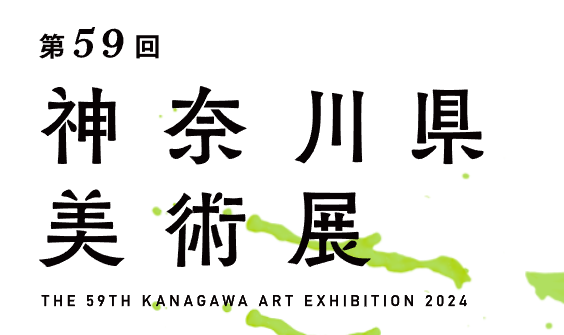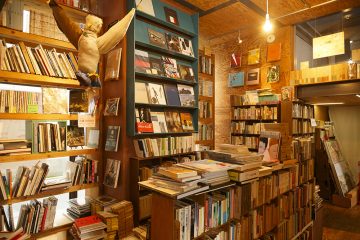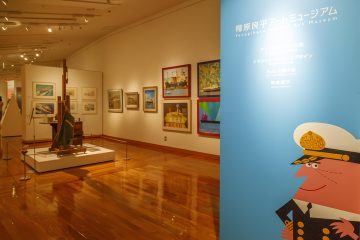58th Kanagawa Prefectural Art Exhibition
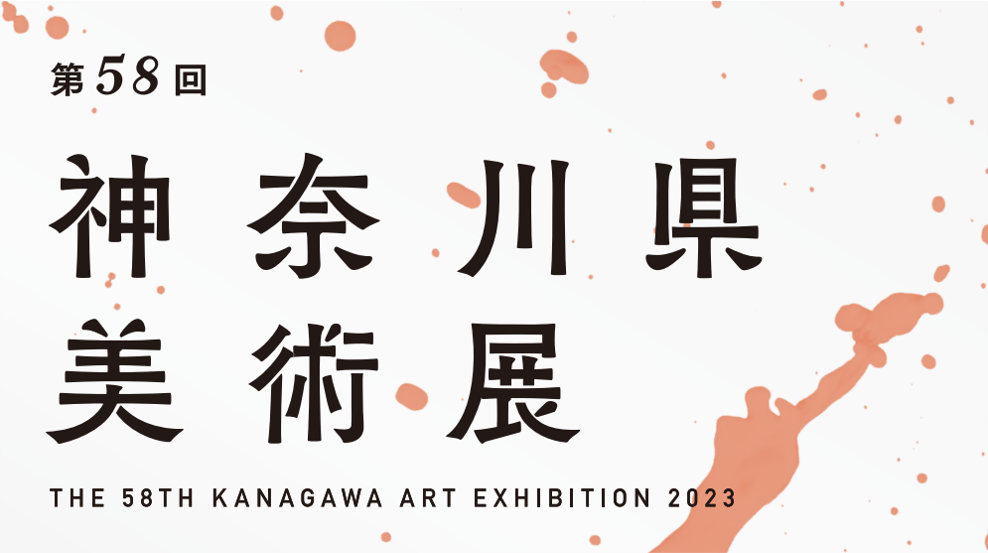
The Kanagawa Prefectural Art Exhibition is the largest public art exhibition in the prefecture, held since 1965.
This art exhibition was started with the aim of nurturing new talent, providing an opportunity for art enthusiasts working in a wide range of fields to inspire each other, and presenting their work.
This year, 1,289 outstanding works were submitted from all over the country, and after a rigorous screening process, the grand prize winners were decided in four categories: 2D/3D works, crafts, calligraphy, and photography.
This time, we spoke to the four grand prize winners.
Mamoru Hirata, 2D/3D Section
"My IKEA painting work (vase, eyelashes and shelf) / My Bacchus (Green)"
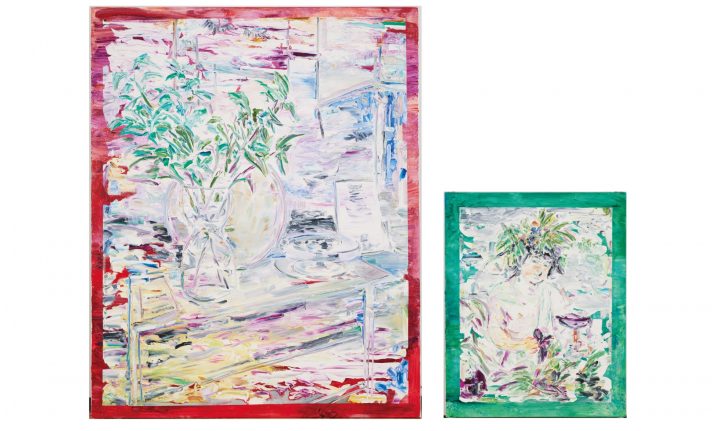
-Congratulations on winning the Grand Prize. Please tell us how you feel right now.
Thank you so much for this wonderful award. I was very surprised when I heard that I had won the Grand Prize.
-What made you decide to become an artist?
I feel that by thinking about and studying art, my life becomes just a little bit richer.
I was never particularly good at drawing, but I did enjoy looking at artworks in art museums.
One day, I thought that if the creator is the person closest to the work, then if I also became a player, I would be able to get a feel for the reality of the production side up close.
The initial trigger was the idea that it might improve the resolution of how artworks are viewed.
After that, I continued to study at an art preparatory school and at an art university.
However, after graduating, I realized that I had begun walking through a foggy world with no clear goals, standards, or objectives. However, I now believe that this is the reality of the creative side, and that I have truly gone from being an art fan to being a creative person.
What made you decide to apply this time?
First of all, I thought it was appealing that the relatively large size of the work, 150cm, would be judged in person.
Also, in May I held an exhibition in the studio where I normally work, and by chance I was drawing a 150cm piece at the time, and the maximum size for submissions was 150cm, so the timing was good too.
The other piece, My Bacchus (Green), which is fixed with steel fittings, was created when I participated in BankART AIR 2023 SPRING OPEN STUDIO from April to mid-June.The exhibition format was different at the time, but I suddenly thought that it would go well with the No. 150 work.My final decision was based on intuition, and I'm glad that it received such good reviews.
-Please tell us about the concept of the work and the thoughts you put into it while creating it.
My IKEA painting work (vase, eyelashes and shelf):
Furniture (especially high-end furniture) is intended for medium- to long-term use. In Japan, for example, a paulownia wood chest of drawers is said to last about 100 years with repairs and regular maintenance. However, IKEA furniture differs from the general assembly method by requiring customers to assemble it themselves to keep costs down and by assuming short-term use. As a result, it is impossible to reassemble after disassembly, so it may not be covered by the warranty when you move, or you may not be able to remove it from your home.
I was interested in the contradiction and distortion of depicting furniture (and the surrounding interior) that is not intended for long-term use in oil painting, a recording medium that can be preserved for a long time if the environment is right, and created this work.
I also find it interesting that when you go to an IKEA store, you will see bottles, artificial flowers, lighting, etc. already set up as if they were motifs, creating a space where motifs that are difficult to manipulate at will are always installed.
My Bacchus ( Green ):
As the title suggests, this work is related to alcohol, but first of all, the horizontal and vertical orientation of the canvas can be controlled by turning four handles attached to the steel fittings.
For a typical painting, the horizontal and vertical alignment with the wall and floor of the building is determined by installing the painting on the wall using a spirit level. (This also determines the position of the caption.)
However, every viewer has their own physical misalignment, and even if the numbers indicate that something is horizontal or vertical, they will perceive a subjective and psychological distortion or misalignment. This is the same for me as the artist, and it is natural that for some reason the numerically horizontal or vertical dimensions do not feel straight. Furthermore, if there is an unintentional distortion in the pictorial space (perspective or color value), the brain that perceives this can be affected and cause an illusion, so great care is required. Therefore, the work is installed using the following process.
1. Attach the bracket to the wall. (It is okay if the painting itself is already attached.)
2. Use a laser level or digital angle meter to measure the horizontal and vertical alignment of the metal fittings (at least four points, top, bottom, left and right).
3. After checking that the metal fittings are level and perpendicular to the wall or floor, turn the four handles to measure the horizontal and vertical alignment of the canvas in the same way as the steel fittings.
4. After determining the horizontal and vertical alignment of the wall, metal fittings, and canvas, I, the installer, stand in front of the work and manipulate the four handles until the canvas is at a point that I subjectively consider to be horizontal and vertical, making fine adjustments until a comfortable amount of pressure is applied to the painting.
Through the above process, viewers can appreciate the painting while keeping in mind my sense of horizontality and verticality as the artist.
Also, the subject of the painting, Bacchus, is the god of alcohol and a drunkard. I love alcohol, and one of the themes of my work is enjoying the misalignment of our sense of horizontal and vertical when our semicircular canals are disrupted by alcohol.
-What were the things you focused on the most and the things you struggled with?
It's actually been about 10 years since I last completed my prep school year, and it was a constant process of trial and error to paint using oil paint on canvas. It's a bit technical in terms of how I use the paint, but I struggled to bring out a sense of hobbyism in the use of oil paint as an independent form of expression, rather than using it in a hobby-like way. For that reason, I focused on the brushstrokes characteristic of oil painting, and the hardness and fluidity of the paint when applied thickly. I focused on identifying the exact moment when pressure was applied to the canvas, such as in glossy areas or faded areas.
-Please tell us about your future activities and goals.
I am planning a solo exhibition in late October.
In November, we will be holding Super Open Studio, an event in the Sagamihara area that introduces the creative studios of artists that are not normally open to the public. I work in a studio called "Penguin's House Green," so I plan to exhibit my work there.
First of all, I think we need to prepare for those two things.
-Please give us a message for everyone who is aiming to apply next year!
The best time to apply is when you think, "Maybe I should give it a try."
If you can express your "feel good" in your work, you will surely connect with people who can relate to it.
I'm really looking forward to seeing your next great piece.
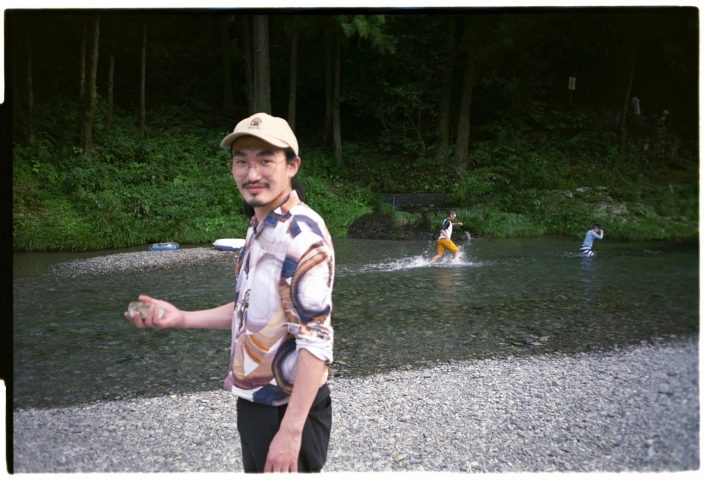
"profile"
Mamoru Hirata
Biography
Born in Saitama Prefecture in 1989
2019 Graduated from Tama Art University Graduate School, Department of Painting
Main exhibits
2018
Painting and Movement (Rough Dimension), Yotsuya Unidentified Studio, Tokyo
Exciting! Summer Shinbi Download Campaign, SHINBI GALLERY, Tokyo
Images may always be desired to be copied, Blan Class, Kanagawa
2019
BankART AIR 2019 0PEN STUDIO, BankART Station, Kanagawa
2022
Tokimeki Painting Road, HB.Nezu, Tokyo
2023
The Basic Force, held at the Uraraka Art Festival, The 5th Floor, Tokyo
Scratching the Gap, Penguin's House Green, Kanagawa
BankART AIR 2023 SPRING OPEN STUDIO, BankART Station, Kanagawa
Artist in Residence
2019 BankART AIR 2019 0PEN STUDIO
2023 BankART AIR 2023 SPRING OPEN STUDIO
Awards
2017 Tama Art University Graduation Project Fukuzawa Ichiro Award
Crafts Division: Mase Kasuga
"Belly button cushion"
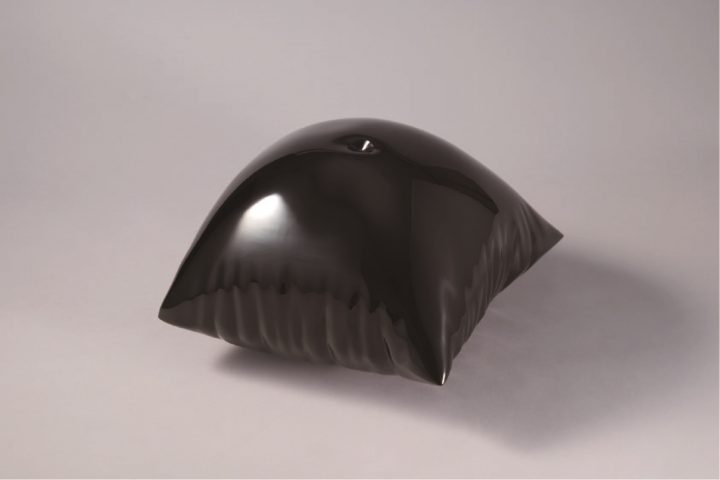
-Congratulations on winning the Grand Prize. Please tell us how you feel right now.
It was my first time to enter a competition, so I was surprised when I heard the results, but I was also very happy. It motivated me to continue creating.
-What made you decide to become an artist?
It all started when I wanted to pursue a career that I could devote my life to mastering, just like my grandfathers, who were carpenters and hand-painted sign craftsmen. I chose lacquer because I was attracted to the interesting nature of the material and the beautiful luster, but I've always loved working with my hands since I was little, and the depth of the lacquering process made me fall in love with it. The world of lacquer has so many techniques and materials, and I still have so much to learn.
What made you decide to apply this time?
I had been away from Kanagawa for about six years to continue my studies and get a job, but I thought it would be a good opportunity to return to my hometown for the first time in a long while, so I decided to apply.It was also the time when I decided to make a living as a lacquer artist, so it was also more of a test of my skills.
-Please tell us about the concept of the work and the thoughts you put into it while creating it.
I create works that explore themes such as ambiguity, consciousness, and the edges of form. One day, I was sleeping with a cushion I had in my room as a body pillow, and when I held it in front of my stomach, I felt as if my body was being extended, and I thought it would be interesting if this thing also had a belly button like a human's, so I recreated it as it was. In reality, the shape of a cushion is fluid and it does not maintain the tension seen in my work, but I believe that lacquer has the power to fix an ideal shape, so I captured a moment of an ambiguous shape and created a work. I observed the belly button on one of my friend's, who I was living with in a shared house at the time.
Lacquerware is strongly associated with traditional crafts and tableware, but I want to focus on the luster of this material and create humorous pieces that will make people chuckle.
-What were the things you focused on the most and the things you struggled with ?
This piece uses a technique called "Roiroage," a lacquering technique. To achieve this kind of shine, each of the roughly 20 layers of lacquer needs to be polished. Finally, all of the fine irregularities are polished away with small pieces of charcoal, and each polishing session takes several hours. After that, the entire piece is polished using the palms and fingers. It's an incredibly difficult process, but I'm proud that I've put my heart and soul into every last detail, so I hope you'll pay attention to the unique shine of this lacquer.
-Please tell us about your future activities and goals.
I am currently studying cultural property conservation at the Graduate School of Tokyo University of the Arts, where I am researching both the production side and the restoration of lacquerware. Both production and restoration require a vast amount of knowledge about history and lacquer, and I would like to continue acquiring knowledge, honing my skills, and continuing to be involved with lacquerware as both an artist and restorer.
-Please give us a message for everyone who is aiming to apply next year!
The Kanagawa Prefectural Art Exhibition does not require the submission of a statement and is judged solely on the work itself, but I felt that if I put in my own unique touches, I would be able to receive a good evaluation. The hurdles to submitting were low and it was easy, so I encourage everyone to give it a try.
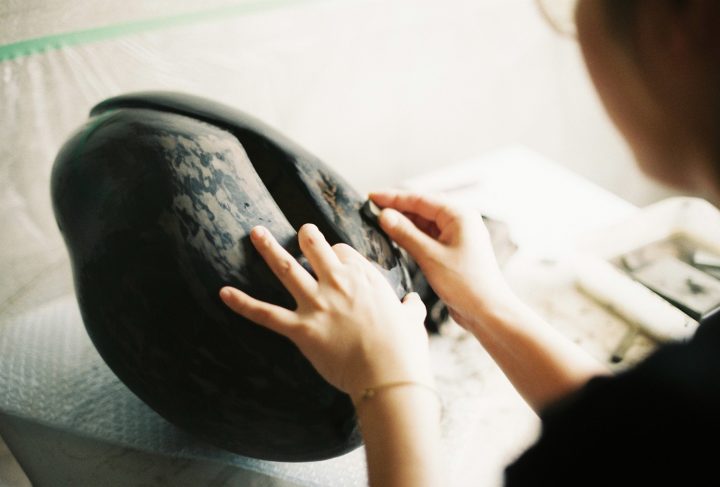
"profile"
Mase Kasuga
Biography
Born in Kanagawa Prefecture in 1998
Graduated from Kanazawa College of Art, Faculty of Arts and Crafts, Department of Crafts in 2021
2023 ~ Currently enrolled in the master's program in the Department of Cultural Heritage Conservation, Graduate School of Fine Arts, Tokyo University of the Arts
Calligraphy category: Masako Ueda
"Shinkansen (East Japan Ver.)"
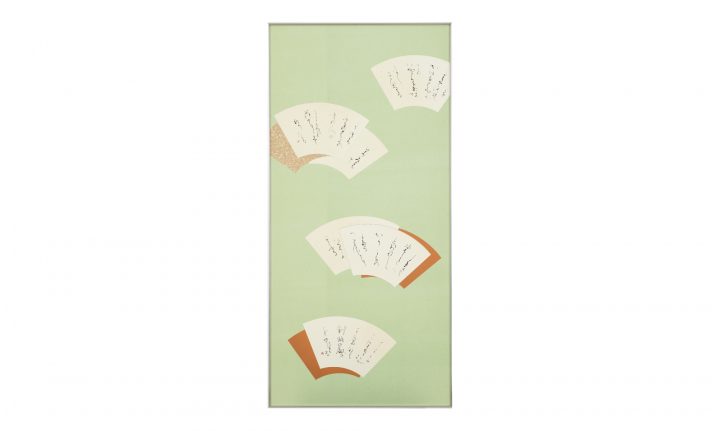
-Congratulations on winning the Grand Prize. Please tell us how you feel right now.
At first I thought it was a prank (lol). I first entered my work last year, and this is my second time this year, so I had always dreamed of receiving it someday, but I never expected to receive it so soon, so I'm very surprised.
-What made you decide to become an artist?
I'm embarrassed to say that I'm far from being an artist, but I think I just love writing. When I was a student, I wanted to be a high school calligraphy teacher, but I changed my mind and managed to continue writing while working as a company employee while still single. The biggest reason I've been able to continue writing this far is that I've been blessed with good teachers and friends since my student days, as well as an understanding family.
What made you decide to apply this time?
I've been a resident of Kanagawa Prefecture for nine years now, so it pains me to say this, but I only recently found out about the Kanagawa Prefectural Art Exhibition, and submitted my work for the first time last year. At first, I was really casual about it. I was also selected for the exhibition last year, and I saw the exhibition, which I remember being very impressed by the wide variety of works on display.
-Please tell us about the concept of the work and the thoughts you put into it while creating it.
My son is now four and a half years old and a train lover, so he's influenced me to become more knowledgeable about trains, and I'm slowly becoming a train mom myself. As a result, I've been exploring ways to combine trains and calligraphy, and this piece is part of that. In an interview with writer Sawako Agawa, who is the godfather of the Nozomi Shinkansen, I learned that her father had given her the advice that "every single train on the Japanese National Railways has been named in Japanese," and so I thought, why not choose a waka poem containing the name of my son's favorite Shinkansen and write it in kana on a fan-shaped piece of writing paper? Due to limitations with the size of the frame and paper, I could only fit the East Japan version, hence the title (laughs).
-What were the things you focused on the most and the things you struggled with?
I experimented with the balance of the placement of the fan faces and the number of pieces, etc. This time I tried to keep the number of colors as low as possible, aiming for something simple and casual.
I was torn between using yellow-green paper for the mint green background, but after asking my husband, we finally decided on this color, saying "Let's take a risk!" The overlapping fan surfaces of the second and third tiers are outlined in silver to make their outlines clear.
-Please tell us about your future activities and goals.
The classic kana used to write waka and haiku is an important part of Japanese culture, but in the future I would like to work on things that only I can do now, such as creating works from a mother's perspective and incorporating collaborations between railways and calligraphy. Calligraphy is thought to have a high barrier to entry, but through the harmonious style (calligraphy that mixes kanji and kana) that I am currently actively working on, I would like to enjoy creating works that feel as familiar as paintings, in a style that anyone can read.
-Please give us a message for everyone who is aiming to apply next year!
I know that someone like me can't really speak arrogantly, but... I think you will be overwhelmed by the many wonderful works on display at the venue, but I hope you will enjoy creating your work until the very end.
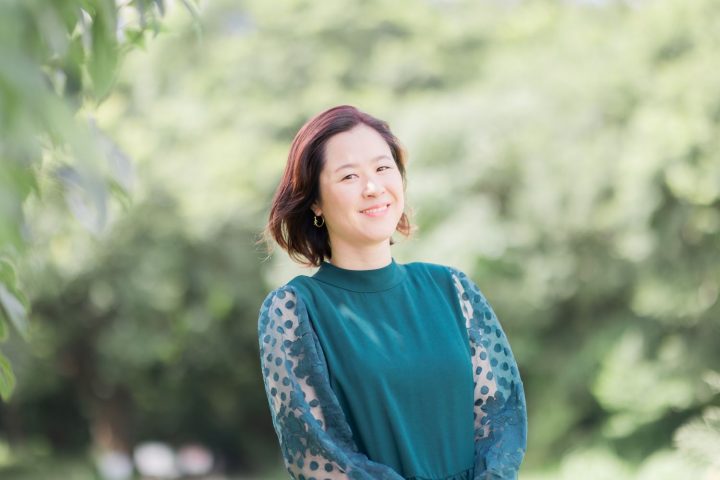
"profile"
Masako Ueda
Instagram (https://www.instagram.com/shoko0621555/)
・Career summary, awards, etc.
Born in 1985 in Kumamoto Prefecture, currently living in Kanagawa Prefecture
2008 Graduated from Daito Bunka University, Received the Itabashi Cultural Encouragement Award
Selected for the Nitten Exhibition twice
Yomiuri Calligraphy Association Secretary
Japanese Calligraphy Exhibition: Selected Outstanding Artists
Calligraphy Koyokai Board Member
Studied under Professor Naomi Hara
Photography category: Yuya Etori
"Mountain solo trip"
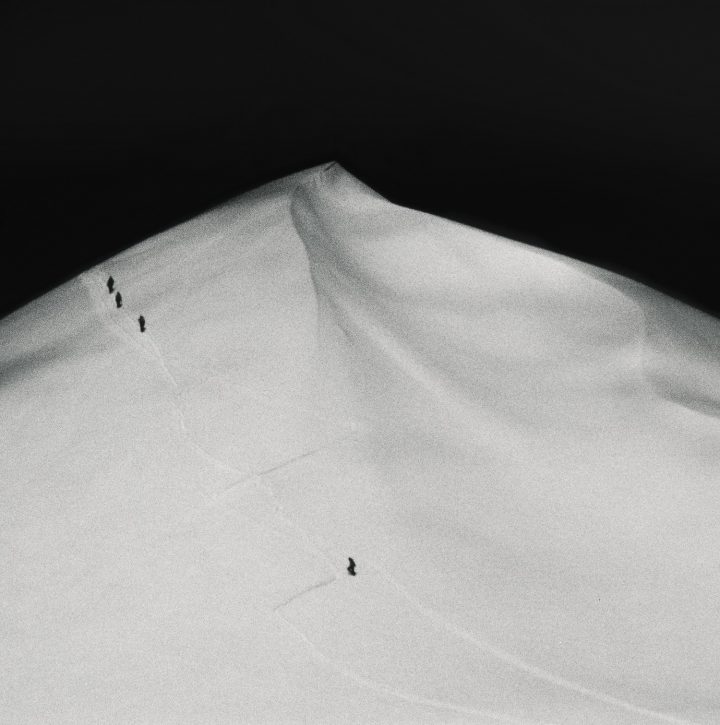
-Congratulations on winning the Grand Prize. Please tell us how you feel right now.
I am very pleased that our ongoing efforts have produced results.
-What made you decide to become an artist?
It all started when I wanted to confront myself through photography and share with many people the correspondence between the natural scenery I see and the landscapes I imagine in my mind through my photographs.
What made you decide to apply this time?
I saw the judges' announcement on social media and decided to apply to see if my approach would be accepted from an artistic perspective.
-Please tell us about the concept of the work and the thoughts you put into it while creating it.
The title "Alone in the Mountains" applies not only to this work, but also to a series of photographs I have seen and taken while climbing mountains.
Among them, the work submitted this time is a photograph that vividly expresses the feelings felt while climbing a mountain.
Even though it may feel tough to carry heavy filming equipment, force yourself to lift your legs, put yourself in polar environments of your own volition, and continue climbing endlessly, the reason why you climb mountains is simply because the scenery you see on the mountain is beautiful.
This photograph captures the correspondence between this mental image and the scene before one's eyes, and expresses the feeling of continuing to move forward even when the future is unclear.
-What were the things you focused on the most and the things you struggled with?
This photo was taken in a snowy mountain. The biggest hurdle was carrying the equipment, including a medium-format film camera, to the location. In order to take this photo, I went on many mountain climbing trips to the Northern Alps and trained hard.
Because my subject is natural landscapes, I believe it is important to make repeated attempts to obtain a depiction that I am satisfied with, and sometimes to leave it up to luck.I would say that the point I was most particular about was that I arrived at this result after several years of uncompromising mountain climbing, returning home to develop the film and checking the results.
-Please tell us about your future activities and goals.
I shoot throughout the year on multiple projects.
I would like to continue these projects, including "Alone in the Mountains," for which I received the award this time, "Hokkaido," which expresses the scenery of my hometown linked to past memories, and "In the Mist," which photographs landscapes obscured by fog, while finding new perspectives and continuing to take photographs for the rest of my life.
I received awards for "Mountain Self-Advancement" and "Hokkaido," so I would like to continue working on "In the Mist" to achieve results, while also continuing to work on this project from a new perspective.
-Please give us a message for everyone who is aiming to apply next year!
Don't be too nervous, just submit a piece that captures your unique perspective.
Continuity is the hardest part. Keep going even if you don't see results. Let's do our best together.
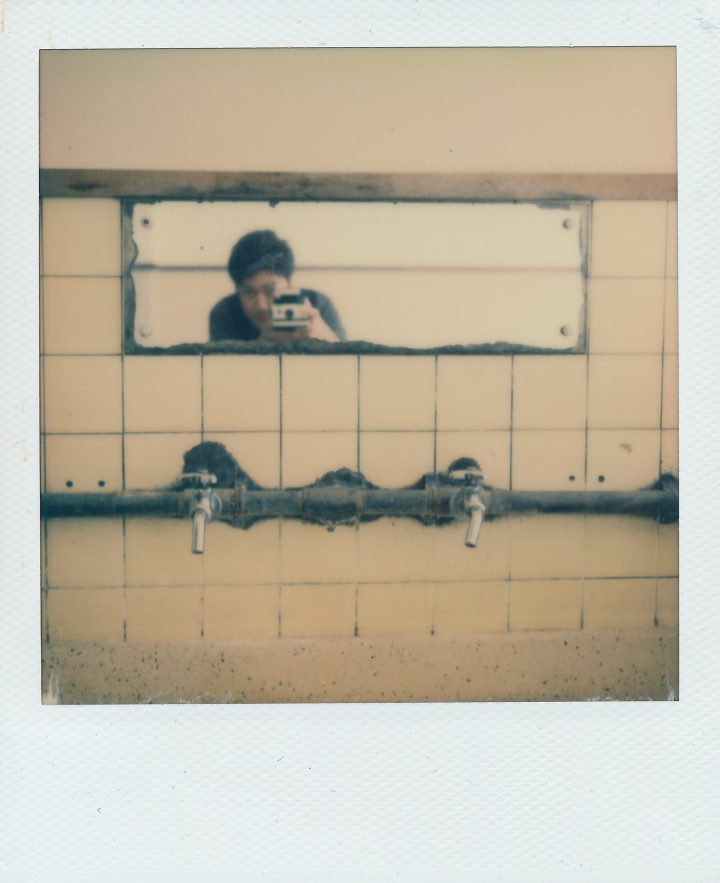
"profile"
Yuya Etori
・Career summary, awards, etc.
Biography
Born in Hokkaido in 1989
Graduated from Otaru University of Commerce in 2011
Awards
44th Funabashi City Photo Exhibition Kitai Kazuo Award
exhibition
2021 Solo Exhibition "Friction reflection"
2022 Solo Exhibition "Hokkaido"
At the Kanagawa Prefectural Hall Gallery, 312 winning and selected works were selected through a rigorous screening process.
The exhibition will be divided into two periods: the first period (flat and three-dimensional works) and the second period (crafts, calligraphy, and photography).
1st period exhibition (flat 3D section) September 6th (Wednesday) - September 17th (Sunday)
2nd Exhibition (Crafts, Calligraphy, Photography) September 20th (Wed) - October 1st (Sun)
Venue: Kanagawa Prefectural Hall Gallery
Time: 10:00-18:00 *Until 14:00 on the last day
